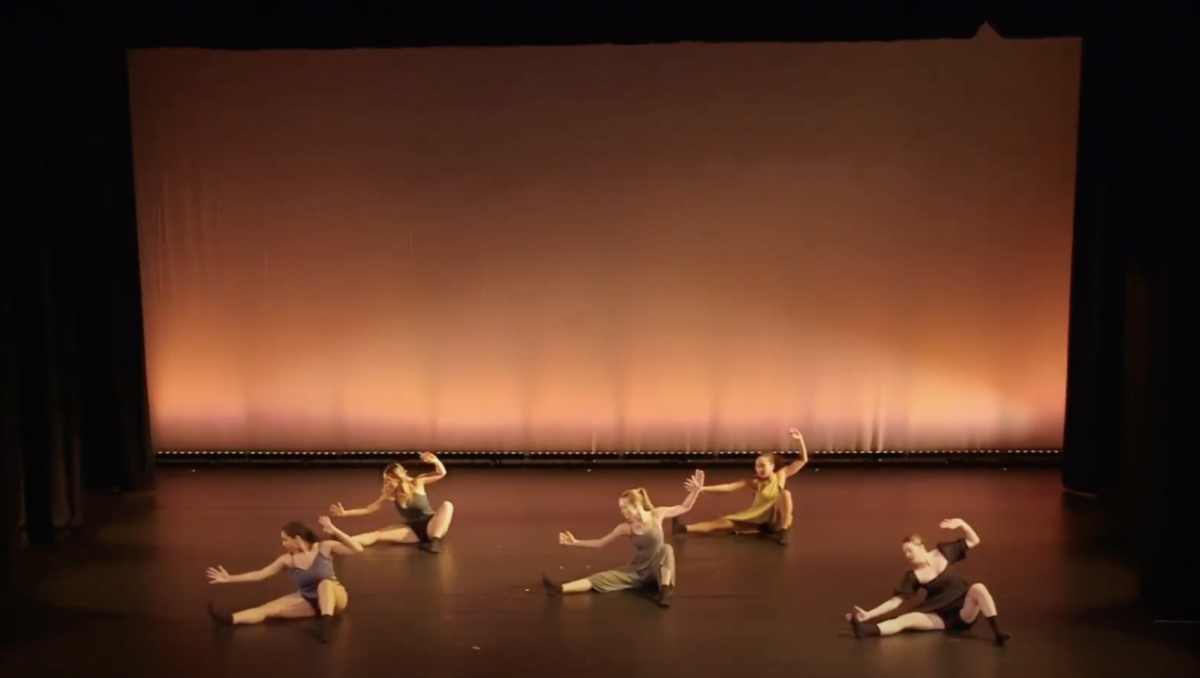In this week’s episode of “Halftime on the Hilltop,” we zero in on the beautiful game. Legendary Washington Post reporter Steven Goff joins Carrie McDonald (COL ’24) and Demi Pappas (MSB ’24) to discuss the upcoming USMNT’s World Cup qualifiers in late March, U.S. women’s soccer and the future of the NWSL.
Later, Saar Shah (MSB ’24) hops into the studio to recap the last exciting week in Hilltop sports, the highlight of which is the first Big East championship for the men’s swim and dive team! Our female Hoya hoopers finish strong in Big East play, lacrosse is starting off dominant, and there is #nonews in the men’s basketball program (or, at least, nothing we want to emphasize. But hey, we still love Ryan Mutombo!) Finally, former Hoya footballer Chris Hegardt makes his MLS debut with Charlotte FC! As the inspirational Dani Rojas wisely elucidates, “football is life” indeed.
Transcript:
DP: Welcome to this week’s edition of “Halftime on the Hilltop,” it’s Demi here. I want to thank you listeners for tuning in after what was a pedantic recap of Georgetown men’s basketball season thus far. I think it can get a little, a little sad, a little hackneyed, and I promise we have some more positive stuff this time. So this week columnist Carrie McDonald and I sat down with D.C. soccer legend The Washington Post reporter Stephen Goff. He started writing for the post in the early 90s when he was a sophomore at American University. He’s covered every World Cup since 1994, plus five Women’s World Cups, and in 2013, he was inducted into the Virginia D.C. Soccer Hall of Fame. So it was a real pleasure to sit down with him.
We talked about upcoming U.S. Men’s National Team World Cup qualifying games and the future of the Women’s National Team. And just the evolution of the women’s game in light of the recent equal pay settlement. And then Saar comes into the studio and we give a little quick recap about what’s going on, on and around the hilltop. So exciting episode ahead and yeah, here Steven Goff.
On Sunday, forward for Borussia Dortmund and the U.S. Men’s National Team star Giovanni Reyna slightly injured his right hamstring in a match for Dortmund and as you detailed another serious re-injury would have sidelined him for the U.S.’ final three World Cup qualifiers in late March. So Reina should be good to go. But the U.S. Men’s National Team is really walking this injury tightrope, as midfielder Weston McKenney just broke his foot. So do you think the U.S. Men’s National Team should be concerned about the loss of these two young players, especially when they have been so integral in the revitalization of the team in this upcoming World Cup?
SG: Yeah, no, it’s a big concern. Losing McKennie, who’s been one of their top players during qualifying. You know, he had that off the field incident at the start of qualifying last September. But he bounced back and showed a lot of maturity and played very well as a two-way midfielder scoring goals. And, you know, Reina has been out for so long. They haven’t been counting on him, if they are able to bring him in, and it looks like they will. That’s just a bonus. And certainly with McKennie out, it’s nice to have another high-caliber player in camp. You know, all national teams have to deal with injuries, because these guys are playing every week, every day with their club teams. Injuries happen. This is certainly a setback for the U.S., but it happens with all teams.
DP: What are your predictions for the upcoming World Cup qualifying games in late March?
SG: For the U.S., you know, they’ve never won a qualifier in Mexico, it’s a very difficult place to play. First of all, you’re playing traditionally the best team in the region, you’re playing at an altitude, there’s an intimidating crowd. It’s a hard place to play. They’ve earned a few draws over the years. They did win a friendly years ago, but they’ve never won a qualifier there. So to expect them to win is probably a little far-fetched and to get a point, it’d be a great success. Realistically, if they lose attention, all focus turns to the one remaining home game in Orlando against Panama. That’s the must-win game. I mean, if you get a point in Mexico, great. But you got to win at home. And you got to beat Panama, who’s one of the two teams in pursuit of the top three, beyond Canada, U.S., Mexico.
CM: Okay, so especially after losing to Panama, 1-0 last October, the next gains will be really crucial. So recognizing this, do you think the addition of youthful energetic players that we’ve been seeing recently will help the U.S. qualify this year after, you know, missing out last time around?
SG: Yeah, it certainly made a difference already. You know, this is a young, extremely talented, probably the most talented, technically, group the U.S. has ever put out. What they lack is experience in international situations. And, you know, we’ve seen some of those ups and downs in consistency of youth throughout qualifying, you know, they’ve looked terrific in certain games and certain halves. And then, you know, they’ve had a couple bad matches, like the game in Panama where they were poor and the game in Jamaica, where, you know, they were fortunate not to lose. So that’s the one aspect that they’ve need to learn about and grow into during this qualifying schedule. The raw ability though, is unquestioned. You know, you’re talking about players at some of the biggest clubs in Europe. And it’s never been like that before for the U.S. men. So, on paper, this is a team that should not only qualify, should do well.
DP: So on Feb. 23, the U.S. Women’s National Team earned their fifth She Believes Cup title. I myself have been overwhelmed by the amount of new faces that I see when looking at the rosters. So who do you think from the new women’s national team talent pool we should be looking out for?
SG: Catarina Macario was fantastic. She’s you know, she’s world class already at a young age. She plays for Olympique Feminene, one of the top teams in the world if not the top women’s program in the world. Andy Sullivan, who grew up in Washington and plays for the Washington Spirit, has really put her stamp on that defensive midfield position. The coach, Vlatko Andonovski, loves her game, and is getting her more experience as World Cup and Olympic qualifying approaches. And then you have players you know, like Mallory Pugh has been around for several years, but she’s had a lot of ups and downs. She’s still a young player, though. So, you know, we’re seeing her kind of in her second act. You know, there are waves and waves of U.S. Women’s players capable of performing on the international stage. You know, it’s a matter of the coach picking the right players and going through the process of getting them experience and seeing who can compete at higher levels. You know, the She Believes cup wasn’t the toughest tournament, they’ll have some friendlies coming up. The CONCACAF tournament is, you know, not the most difficult by any means. But it’s important. You know, there’s consequences there and you can’t mess it up.
CM: Yeah, definitely. And I was just so excited to see spirit players really make their mark. Robin’s my age, she’s only 19. So it’s absolutely incredible to see her on the national stage and to make such an impact. And Hatch. Well, she’s a little bit older, but she had such a successful season in the NWSL. So seeing her being able to translate that success to the national team was really, really cool to watch. Bearing that in mind with all these new players coming in, how do you think that Vlatko Andonovski is handling the generational transition?
SG: Yeah, the last couple camps, and certainly for the tournament that just concluded he, you know, he did not call up a lot of the big names, the veteran players like Rapinoe and Heath and Morgan. There is a, you know, a transition going on, he needs to get these younger players up to speed. If that means putting the veteran players off on the side for a few camps, then, so be it. You can call them back at any time. And then he certainly will. A player like Alex Morgan still has a lot to offer. And she presumably will be back again soon. You know, it depends how they perform in the NWSL. You know, he has said it’s not automatic. Just because you’ve done great things over the years doesn’t mean you’re automatically on the squad.
DP: So when we analyze the current evolution of the women’s game right now, there’s been a lot of growth on the women’s side of things in Europe. And looking forward, do you think the U.S. women’s national team should be concerned about this, especially with the large amount of big name players going and playing in European clubs?
SG: You know, there are programs that are finally spending the resources or Federations that are spending the resources on the women’s game, and you see it in traditional European soccer countries. Spain, for instance, you know, that is a team that’s on the brink of becoming a world class program and not quite there yet. We saw that in the last World Cup, they certainly had talent, but they weren’t ready to take that next step. You know, and then there’s the more traditional countries like France, they’re producing a lot of world class players, England has gotten a lot better. Germany’s always been good. The Scandinavian countries have always been good. The fact that they will have more competition going forward is a good thing. Because they really haven’t had much, there’s only about 10 teams in the world that can compete with the U.S. national team for the betterment of the sport. They need more countries to take women’s soccer seriously, and to invest in the players and build better teams.
CM: Yeah, so going off at that with more players going to Europe and with the European domestic leagues attracting these big name players. Do you think that will have an effect on the NWSL with them losing their best players and maybe becoming less competitive as the years go on?
SG: Yeah, that’s potentially a big problem for the NWSL because the money at certain clubs in Europe is growing and is bigger than what the NWSL can offer. There aren’t a lot of clubs. I mean, it seems like there are a lot. I mean, it’s you know, it’s Chelsea and Arsenal and Manchester City and England for the most part, Manchester United to a lesser degree. It’s Barcelona, Bayern Munich and maybe Wolfsburg in Germany and then PSG and Olympic Leone and France. The money’s there, and Catarina Macario, was a player at Stanford, and would be a superstar in the NWSL. But, you know, she wanted to test herself in Europe. And the money was great. And so she’s in Europe, now and for the foreseeable future, other U.S. players have gone over for short periods, and then have come back. Just because, you know, things aren’t as advanced there in the program. Going forward, though, your point is well taken that as the money grows in Europe, more U.S. players will be drawn and attracted to the European leagues, it’s up to NWSL owners to raise their salaries, especially on big name players, so they don’t lose them.
DP: So in light of the landmark pay settlement that the U.S. Women’s National Team just reached with the U.S. Soccer Federation, do you think that their working relationship will change?
SG: I think if you just have a more positive outlook, you have better vibes. Players didn’t get everything they wanted, but they were never going to get everything they wanted. There was a settlement, you know, $22, $24 million. It’s a lot of money, and most of that goes to back pay, the Federation has compromised. And I think that’s what the players wanted. And I think they’re happier. Happier players make for a happier team and a happier program. So these are all positive steps. The issue of equity has gained so much traction over the years that the women have been able to make amazing strides. And they’re being treated much more fairly than they were years ago. Hopefully that trickles down to the professional league, the NWSL.
CM: Yes, you just talked about equal pay, trickling down to the NWSL. And one thing I wanted to quickly mention was even before the settlement, the NWSL players in the league agreed to a historic collective bargaining agreement, which raised the minimum salaries. It’s created better conditions by providing things like insurance, it’s still not exactly where we want to be in terms of equality. But nevertheless, I think it’s still an important step in the right direction. And it’s a historic agreement that I hope we’ll be able to build upon in the coming years. So something else I was wondering was whether you could see a situation in which this equal pay settlement could set a precedent for athletes in other sports to fight for equal pay in the future.
SG: I don’t know about other sports. I do think the U.S. Federation’s settlement with the women will impact other Federations around the world, many of whom have dragged their feet when it comes to women’s soccer for generations. You know, the U.S. women are the standard bearer, both on and off the field. You know, we’ve already seen it over the years where players in other countries, female players in other countries have either, you know, gone on strike, or taken their complaints to the Federation, based on the U.S. cases. So yeah, I think this will have a long lasting impact, whether that affects other women’s sports leagues in the U.S., I can’t say I imagine it certainly bolsters their case.
DP: Well, Mr. Goff, thank you so much for taking the time to chat with us today. I know I can speak for both Carrie and myself that we had a great time talking about World Cup qualifying and the future of the women’s game with D.C. soccer royalty.
SG: Yeah, my pleasure. It was a great time and good luck with everything and feel free to reach out anytime, you got my contact info.
DP: Yes, I do.
CM: Yeah. Thank you so much for talking to us.
DP: Alright, so Saar and I are in the studio just to give you a little quick recap of what’s been going on with our lovely Hoyas this past week or so. So the swim season wrapped up this past weekend, and the men’s swimming and diving earned the 2022 Big East championship so they were named the Big East champs. I saw a video where their head coach jumped into the pool. And Drew Carbone was named the 2022 most outstanding swimmer, so that’s exciting. If you see any swimmers around with their big coats, give them props.
SS: In addition to that, Men’s Lacrosse is off to a really, really good start actually, they’ve beat Johns Hopkins which is obviously one of the premier lacrosse teams and programs in the country, as well as Penn and they’ve started the season off 3-0. Now three players have been recognized by the Big East as, you know, players of the week. Owen McElroy, James Riley were both Big East Defensive Player and Midfielder of the week, respectively. And they beat Notre Dame as well over the weekend. So it’s good that we have a couple teams you know, that we can be proud of right now. And lacrosse, it looks like it is really going to be one of the best teams in the country with a shot at I don’t want to say it but with a shot at winning, you know the big thing so that’s really exciting. And definitely something to keep track of.
DP: The basketball season is wrapping up. Big East play is finishing this week, and this last Sunday, the men had their last home game at Capital One. We fell to number 18 UConn the game, the score was 86-77. So I watched the first half but I promptly switched the channel over to my Cougs and watched number 14 U of H just absolutely demolish SMU 75-61. So I did not watch the second half of our game. And I am shameless about it.
SS: No comment. I’m glad you got to see one win.
DP: 86-77. They were down by like more than 20 for most of the game. So I think that’s like a pretty good ending. Am I wrong, Saar? Am I too glass is half-full?
SS: All right. I do think it’s a little bit sad that like after losing 17 straight games, when we lose the 18th straight game, we’re like, Well, yeah, but we were down by 20. So to lose by nine is like a massive accomplishment. Like, where are we with Georgetown men’s basketball. I admire how positive you’re trying to be. And to see that glass. But that glass is empty.
DP: But on the flip side, the women have had an amazing end to their season. Saar, you wanna talk a little about that?
SS: Yeah, they’ve put together definitely like two ideal games going into the biggest tournament. So they beat Xavier on Friday by 14 and they beat Butler on Sunday by 21 points. So last year, they had two conference wins the whole season this year, they’ve doubled that with four and go into the biggest tournament, they’re coming into it with two wins. More than that, I just feel like at least year over year, they’re getting better. I’m like, I feel I mean, I didn’t watch last year very much at all, but just I’ve seen a lot over the course of this season. And I just feel like they’re getting better every single day. Kelsey Ransom in particular I feel like is just every game I watch. She’s doing something different. And she’s, you know, picked up something new. But just in general, the whole team I feel like they play the whole 40 minutes there they play the whole game and just start to finish they really bring it and you know Big East tournament. It’s one game at a time. Anyone could beat anyone so this is the right way to head into that tournament. And then in other exciting news for professional lawyers we have Chris Hagar who was a midfielder for Georgetown men’s soccer and he just made his professional debut for Charlotte FC against D.C. United a couple days ago.
DP: No, that’s awesome for Chris. Didn’t know the guy personally. But I’m sure I saw him. It’s weird to think that like a couple months ago, he was just like, another guy with a beanie like scootering around campus and now he’s out here playing professional soccer. But good for Chris. We’re excited to follow his journey with Charlotte FC. So yeah, thank you listeners for tuning in. We hope you have an amazing spring break and we’ll be back and it’ll be madness.














